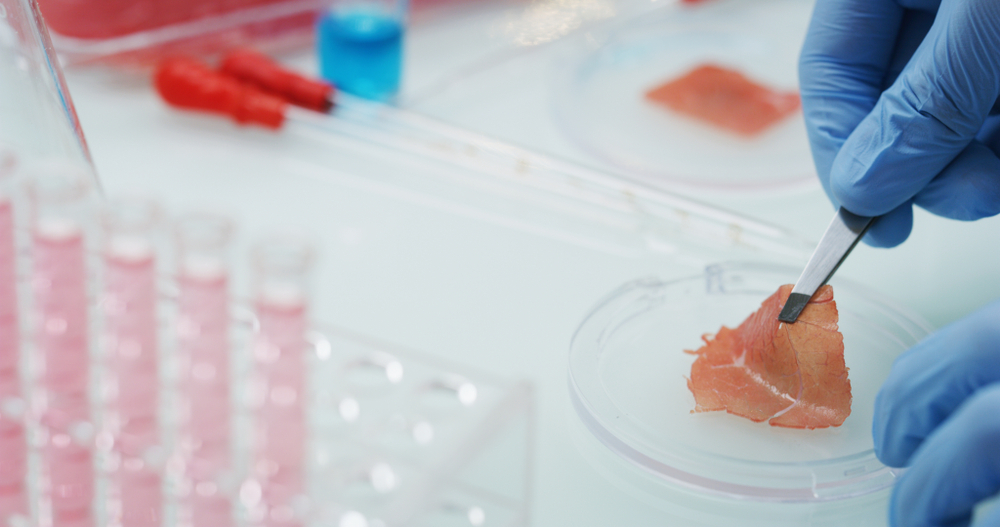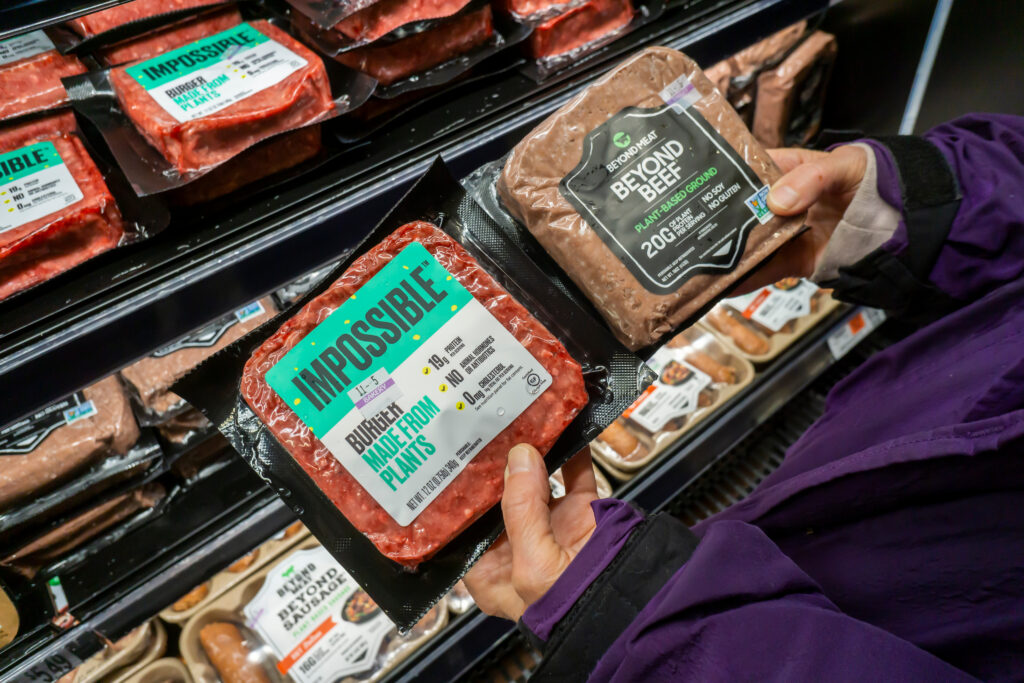It’s no secret that the fake meat industry is in the pits. After the IPO of Beyond Meat in 2019, consumers were curious to try the latest iteration of imitation meat. The new plant-based “meat” was supposed to be an upgrade over the cardboard-tasting soy burgers of the past. But consumer interest quickly declined as people learned ultra-processed fake meat wasn’t healthier for them and was full of industrial additives.
Now, anti-meat advocates are putting their hopes in lab-grown meat. Lab-grown meat is grown in metal bioreactors using real animal cells and a cocktail of growth factors–but no livestock are involved. It was recently approved for sale in the US.
We’re witnessing the same kind of hype for lab-grown meat that we saw with plant-based imitations–and now we’re hearing about new revelations about major problems.
This week, Upside Foods announced it would be opening a lab-grown meat factory near Chicago. “In maybe five to seven years from now, you could see our product on your mainstream grocery store shelves,” said a company executive.
The hype from vegan activists, who hope to replace farm-raised animal protein, was quick.
“Fingers crossed!” wrote Paul Shapiro, the allegedly pervy former Humane Society of the United States executive who has since founded a company making fake meat out of fungus.
But on the heels of the P.R. fanfare, an investigative report in Wired states that Upside Foods can’t even reliably make lab-grown chicken from those factory bioreactors–instead having to laboriously grown meat cells by hand in 2-liter bottles:
Former and current employees say [Upside’s] Emeryville plant tells a misleading story of how Upside’s chicken is made. In fact, sources say, the company’s flagship product—the juicy whole cuts of chicken served at Bar Crenn—are brewed, almost by hand, in tiny bottles. The huge bioreactors, those sources claim, simply aren’t capable of reliably brewing the sheets of tissue needed to form whole cuts of meat such as chicken fillets.
Insiders say that Upside’s meticulously crafted fillets are instead the result of a process that is more arduous and unwieldy than using bioreactors: Employees grow thin sheets of tissue in small plastic flasks called roller bottles and combine them to create a larger hunk of chicken, an approach that is expensive and requires many hours of labor to produce even a small amount of meat. According to former and current employees at Upside, this process happens in a laboratory that doesn’t feature in the factory tours Upside gives to journalists and members of the public. […]
“One day people are going to find out that none of those things work,” the employee says of the tissue cultivators. But Upside staffers continue to show off the reactors to guests on tours of the facility, suggesting that they are part of a functioning process, the employee says.
This reminds us of the old Potemkin Village trick.
To recap: Upside Foods announced to fanfare that it is building a new bioreactor facility to “brew” meat and seafood from cells. But it already reportedly can’t get bioreactors to work very well.
If you dig deeper, you’ll find that even bioreactors themselves have major practical problems. They’re extremely expensive to keep perfectly clean, because even a tiny amount of contamination from bacteria will kill an entire batch of meat cells. The process of brewing lab-grown meat is already so expensive that experts aren’t sure it will ever be cost-competitive with natural, farm-raised meat.
And now we’re reading that Upside can’t even get the bioreactors to work well.
“Internally, employees would joke that the startup could be the next Theranos—the blood testing startup that imploded spectacularly, ending with its founder, Elizabeth Holmes, being convicted of fraud,” Wired reports.
We recall an article from February 2016 in which Upside Foods (then Memphis Meats) predicted it could bring lab-grown meat to market by 2020:
Memphis Meats Inc., a San Francisco company founded by three scientists, aims in three to four years to be the first to sell meat grown from animal cells in steel tanks.
The fake meat industry and its cheerleaders want you to think it’s inevitable. Just remember: If it can’t deliver, PR spin won’t stop the lab-grown meat industry from being cooked.





